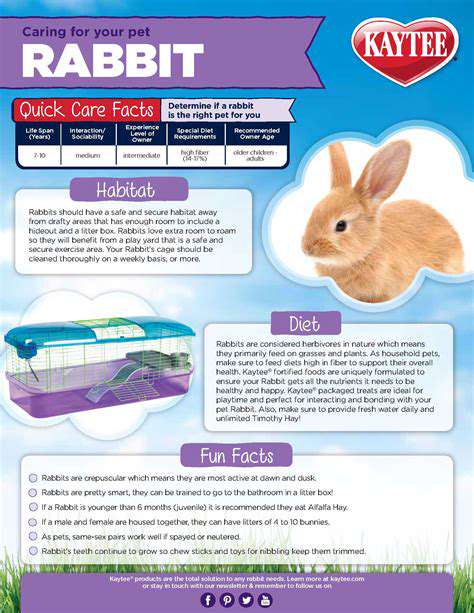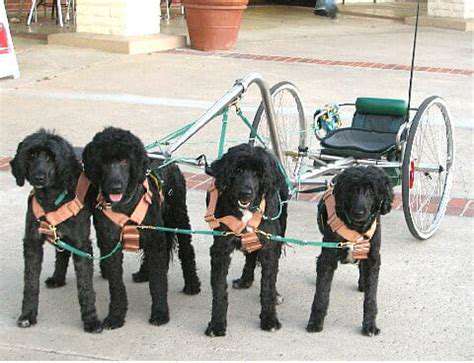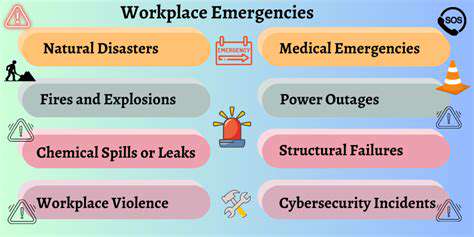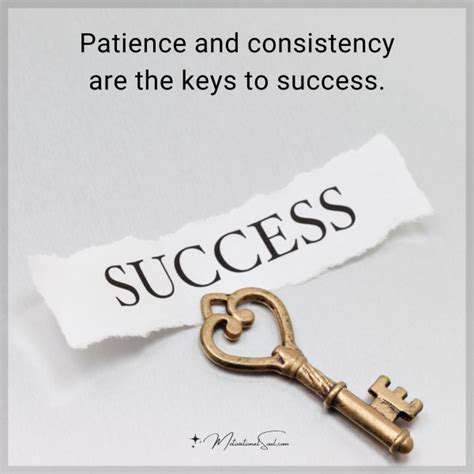How to Teach Your Dog to Roll Over
Transitioning to the Roll Over: Building on the Down
Understanding the Foundation: The Down Command
Before your dog can master the roll over, they need a solid understanding of the down command. This foundational command teaches them to lie down on command, which is a crucial step in the progression to more complex maneuvers. It's important to ensure your dog understands the down command completely, meaning they reliably lie down on cue, without hesitation or confusion, before moving on to the next step. Consistency in training and positive reinforcement are key in establishing this command.
A clear and consistent cue, like a hand signal or a verbal command, paired with positive reinforcement, like treats, praise, or toys, is essential for teaching the down command effectively. Avoid using harsh corrections or punishment, as this can create fear and anxiety, hindering your dog's learning process and potentially damaging your relationship.
Building the Bridge: The Down to Stay Transition
Gradually transitioning from the down command to a stay position strengthens the foundation for the roll over. This involves teaching your dog to hold the down position for increasingly longer durations. Start with short intervals, rewarding the dog for maintaining the position, and gradually increase the duration. This helps them understand the concept of holding a pose and strengthens their concentration and obedience.
Using verbal cues and hand signals, coupled with positive reinforcement, is crucial in this transition. This step is about building your dog's ability to focus and remain still, a key component in the roll over command.
Introducing the Side-to-Side Movement
Once your dog is proficient at holding a down and stay position, it's time to introduce the side-to-side movement. This involves gently guiding your dog's body from one side to the other while they are in the down position. Use a treat as a lure, moving it slowly in the desired direction to encourage the dog to follow with their body.
Be patient and understanding during this phase. Consistent, positive reinforcement and clear communication are essential for success. Avoid forcing the dog, as this can lead to frustration and resistance. Focus on positive feedback and rewarding the slightest movement in the correct direction.
The Pivotal Role of the Lure and Reward
Using a lure, often a treat, is crucial in guiding your dog through the roll over. Hold the treat just outside your dog's nose and slowly move it in the direction you want them to roll. As they follow the treat, their body will naturally start to roll over. The treat serves as a visual and motivating guide throughout the process. The crucial element here is persistence; practice, repetition, and consistent reward will solidify the roll.
The lure should be moved slowly and deliberately, not forcefully or quickly. Rewarding any progress, no matter how small, will encourage your dog and strengthen their understanding of the command. Ensure you provide positive reinforcement immediately after each successful step.
Refining the Roll Over: Consistency and Patience
Mastering the roll over takes time and patience. Consistency in your training methods, using clear commands, and providing ample positive reinforcement will be key to success. Remember to focus on small, incremental steps, gradually increasing the difficulty as your dog progresses. Regular practice sessions, even short ones, will help reinforce the command over time.
Celebrate small victories along the way. Positive reinforcement and praise will motivate your dog and foster a positive learning experience. If your dog encounters difficulty, take a step back, review previous stages, and adjust your approach. Adjustments are part of the training process.
Mastering the Roll Over Command: Reinforcing the Behavior
Understanding the Importance of Positive Reinforcement
Positive reinforcement is crucial in dog training, and the roll over command is no exception. By rewarding desired behaviors, you create a positive association with the action, making the dog more likely to repeat it. This method builds a strong bond between you and your furry friend, fostering trust and mutual respect. Instead of focusing on punishment, which can create fear and anxiety, positive reinforcement builds confidence and encourages a cooperative learning environment.
Consistent positive reinforcement, coupled with clear communication, will lead to a more effective and enjoyable training experience for both you and your dog. This approach not only teaches the command but also strengthens the relationship you share.
Breaking Down the Roll Over Command
The roll over command, while seemingly simple, requires a structured approach. It's important to break it down into smaller, manageable steps to make the learning process less overwhelming. Start with getting your dog to lie down. Once they're comfortable in that position, begin the process of encouraging them to roll onto their back. This gradual progression ensures that your dog understands each step before moving on to the next.
Using Tempting Treats and Encouragement
Treats are a powerful tool in dog training. Using enticing treats strategically during the roll over training will motivate your dog to perform the desired action. Choose treats your dog loves, and present them just as they begin to roll over. Combine this with verbal encouragement, like good boy! or yes!, to reinforce the behavior. The positive association with the treat and the praise helps to create a strong positive memory.
Patience and Consistency: Keys to Success
Patience is essential when teaching any new command to your dog. They may not grasp the roll over command immediately. Be patient and understanding, and celebrate every small step forward. Consistency is equally important. Train your dog at regular intervals, using the same commands and cues every time. This consistency will help your dog learn the association between the command and the desired action.
Addressing Potential Challenges and Troubleshooting
Dogs, like people, can have their off days. If your dog seems hesitant or confused during training, try changing the location or the time of day. Sometimes, a different environment can make the learning experience more enjoyable. If the problem persists, consult with a professional dog trainer. They can identify any underlying issues and provide tailored solutions for your dog's specific needs.
Reinforcing the Learned Behavior and Maintaining Progress
Once your dog masters the roll over command, it's vital to continue reinforcing the behavior. Use treats, praise, and positive reinforcement to maintain the learned skill. Regular practice sessions will help your dog retain the command and make it a habit. This will also prevent the dog from losing the skill, especially if you have taken a break from training. Use the command in different settings to solidify the understanding of the command.
Troubleshooting and Tips for Success
Common Challenges and Solutions
One of the most frequent hurdles in teaching a dog to roll over is maintaining their engagement and motivation throughout the training process. Dogs, like humans, can get bored or frustrated if the training feels repetitive or overly demanding. A key to success is breaking down the exercise into small, manageable steps, rewarding consistent effort, and ensuring the sessions are fun and positive. Varying your training location and incorporating toys or treats can help keep things interesting and prevent your dog from becoming disengaged.
Another common issue is the dog's tendency to focus on the reward rather than following the full sequence of steps. This often results in the dog only performing the last part of the command – like the actual rolling over – without completing the initial steps. Consistency in your cues and clear communication of the entire sequence are vital. Using hand signals and verbal commands in conjunction can help your dog understand the complete action. If your dog isn't understanding the full process, it's important to revisit the initial steps and reinforce the connection between each stage.
Understanding Your Dog's Body Language
Paying close attention to your dog's body language is crucial for successful training. If your dog displays signs of stress or discomfort, such as panting excessively, avoiding eye contact, or stiffening up, it's essential to pause the training session and allow them to relax. A stressed dog is less receptive to learning and may develop a negative association with the training process. Understanding these cues allows you to adjust your approach and ensure a positive learning environment.
Conversely, recognizing signs of eagerness and understanding can significantly accelerate the learning process. A dog that's showing enthusiasm, like wagging its tail or displaying focused attention, is more likely to be receptive to the training cues. Learning to interpret these subtle signals will allow you to tailor your approach, ensuring that training sessions are productive and enjoyable for both you and your furry friend.
Rewarding and Motivating Your Dog
Positive reinforcement is key to teaching your dog to roll over. Choose rewards that are highly motivating for your dog, such as their favorite treats, toys, or praise. Delivering rewards immediately after the desired behavior is crucial to reinforcing the connection between the action and the reward. This immediate feedback helps your dog understand what you're looking for and strengthens the desired response. Varying the types of rewards and using a combination of verbal praise and physical rewards will help maintain motivation throughout the training process.
Consistency in your reward system is essential. Use the same cues, rewards, and praise throughout each training session. This consistency helps your dog learn the connection between the actions and the rewards, leading to a faster and more reliable learning process. Avoid inconsistent rewards or changing the rules mid-training, as this can confuse your dog and impede their progress.
Patience and Persistence
Teaching a dog any new trick, including rolling over, takes time and patience. Don't get discouraged if your dog doesn't master the command immediately. Consistent, positive training sessions over an extended period are essential for success. Celebrate small victories and acknowledge your dog's effort, even if they haven't quite achieved the full command. Building a strong bond through consistent training will lead to a more receptive and motivated learning experience for both of you.
Remember that every dog learns at their own pace. Some dogs may grasp the concept quickly, while others may require more time and repetition. Maintain a positive and encouraging attitude throughout the process, and celebrate your dog's progress, no matter how small.
Read more about How to Teach Your Dog to Roll Over
Hot Recommendations
- The Story of How My Pet Taught Me Patience
- Cat Training 101: Basics & Tips
- Top Brands for Hypoallergenic Cat Food
- Understanding Kitten Meowing: What It Means
- Understanding Dog Barking: Why and How to Stop
- How to Create a Safe Haven for Stray Cats
- How to Teach Your Dog to Roll Over
- Guide to Training Your Dog Off Leash
- Bringing Home Multiple Pets: Introduction Tips
- How to Administer Pet First Aid for Cuts





![Best Pet Strollers [For Seniors or Injured Pets]](/static/images/33/2025-05/ImportantConsiderationsBeforePurchase.jpg)





![My Experience Rescuing a Small Animal [Story]](/static/images/33/2025-05/AJourneyHomeandCaringfortheTinyTraveler.jpg)